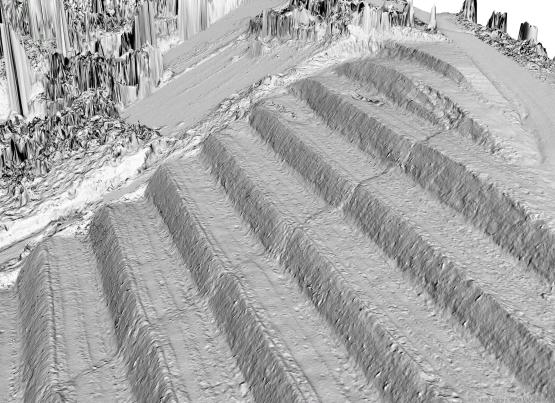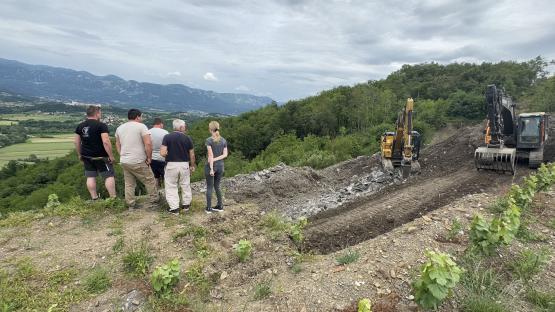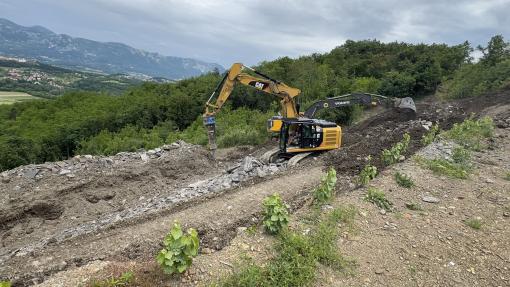Just outside the vineyard above the village of Veliki Žablje/Sable, the ground slipped on a thin clay layer inside the flysch. Simultaneously with the slip, surface cracks appeared in a part of the vineyard, forming a breakaway edge in plan for the potential progression of the avalanche. Ground subsidence was also observed in the upper part of the vineyard, which was estimated to be approximately 30 cm on the basis of visual field inspection.
Modern methods of monitoring surface changes were used to assess the development more precisely. By comparing digital surface models obtained by drone over several successive recordings, not only the erosion processes, but also the position of cracks and displacements were accurately measured, which allowed to limit the area of active movement within the vineyard and served as a basis for a numerical analysis of the effects of possible remediation measures.
On the basis of the results of field monitoring and analyses carried out by experts from the Faculty of Civil Engineering and Geodesy (UL FGG) and the Faculty of Natural Sciences and Engineering (UL NTF) of the University of Ljubljana, as well as interviews with the farmer and consultants from the Agricultural Forestry Institute from Nova Gorica (Kmetijsko gozdarski zavod Nova Gorica), the unstable part of the vineyard was rehabilitated. The rehabilitation was based on measures to stabilise the slope and reduce the risk of further movement.
The case of Veliki Žabelj/Sable shows the need for early identification of slope mass movements and erosion processes before they cause major damage. Early warning signs such as cracks, subsidence or minor changes in the terrain can be detected quickly and acted upon in time with the right approach, often avoiding complex and costly remediation.
The Ero-STOP project has proved to be an important contribution to developing this type of preventive approach. By integrating modern technologies and involving the participation of various experts, the project provides a comprehensive understanding of risks, effective management of existing problems and, crucially, targeted prevention of the consequences of future hazards. Such an approach contributes to a safer and more sustainable agricultural land use in the long term.



